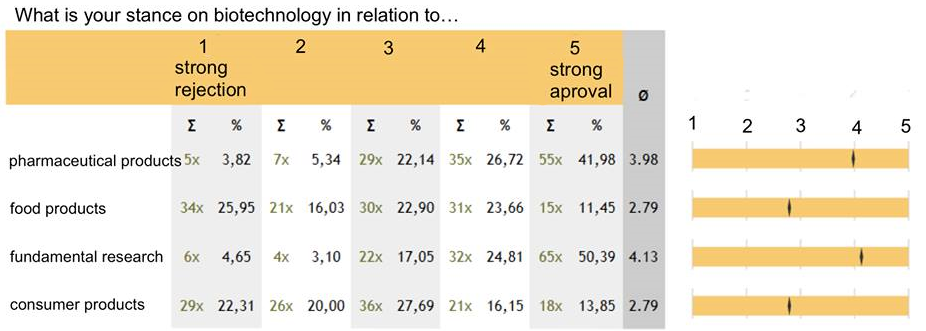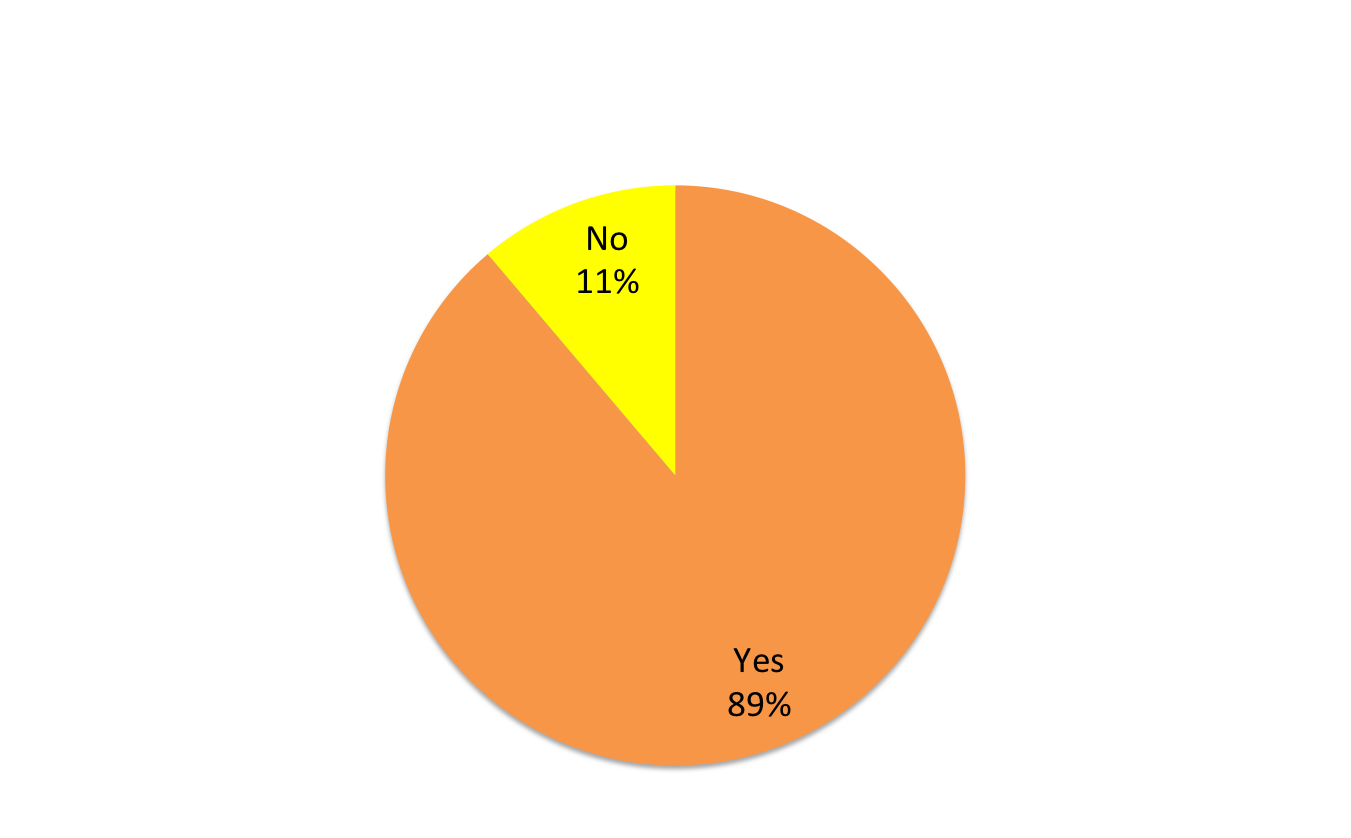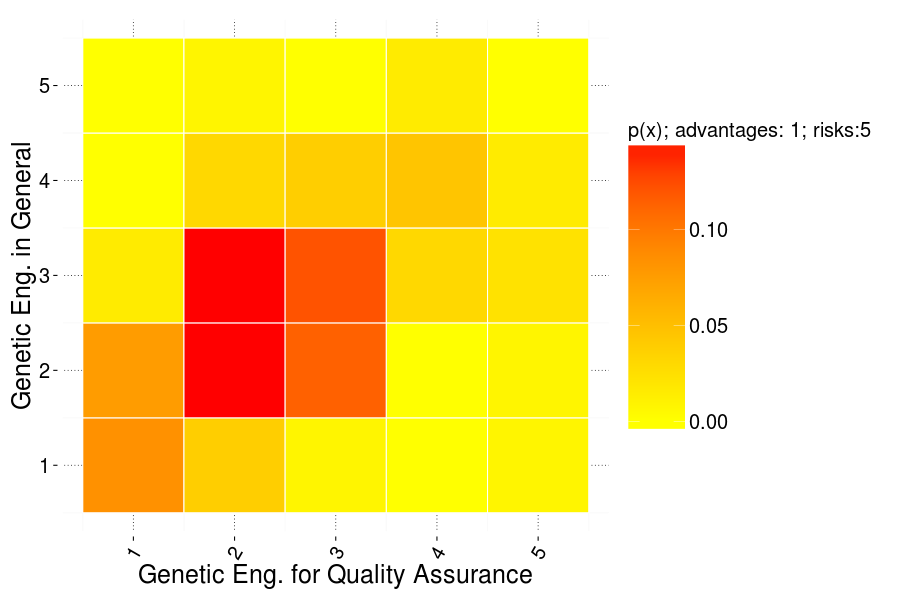Team:TU Darmstadt/humanpractice/Results
From 2013.igem.org
| (11 intermediate revisions not shown) | |||
| Line 177: | Line 177: | ||
<div id="all"> | <div id="all"> | ||
</div> | </div> | ||
| - | |||
<br> | <br> | ||
| + | |||
| Line 189: | Line 189: | ||
The participants were asked to scale their attitude between strong approval and strong rejection towards genetic engineering in different fields like: drug design, food production, luxury goods (e.g. cosmetics) and fundamental research. As shown in the following figure you can see genetic engineering reveals a strong approval in the fields of fundamental research and drug design. In comparison, more people reject it in the fields of food production and luxury goods. | The participants were asked to scale their attitude between strong approval and strong rejection towards genetic engineering in different fields like: drug design, food production, luxury goods (e.g. cosmetics) and fundamental research. As shown in the following figure you can see genetic engineering reveals a strong approval in the fields of fundamental research and drug design. In comparison, more people reject it in the fields of food production and luxury goods. | ||
| - | + | <img src="/wiki/images/f/f5/Tabelle_frage6_eng_korrigiert.png" alt="table1" style="float:right; margin:15px" width="555.6" height="198.6"> | |
| + | <img src="https://static.igem.org/mediawiki/2013/4/42/Tabelle_einstellung_13_eng.png" alt="human practice 1" style="float:right; margin:15px;" width="555.6" height="91.2"> | ||
| + | <br> | ||
| + | In addition to the attitude towards biotechnology in general, we were interested how the participants scaled their attitude towards our detection system for food safety based on genetically modified organisms. | ||
| + | <br> | ||
| + | <br> | ||
| + | It turned out that the opinion about the use of GMOs for quality assurance was much more positive compared to the attitude towards genetically modified foods. The acceptance can be compared to the one in drug design and fundamental research. This result concurs with the gathered feedback that a lot of participants are concerned that there might be a health threat from genetically modified foods or that the risk and consequences from a GMO-outbreak cannot be foreseen. | ||
| + | <br> | ||
| + | <br> | ||
| + | A high number of people also expressed the fear that our detection organisms could be released by accident and thereby contaminate the food as well. This information shows us how important good safety precautions are for the acceptance of our project. To cover all the heard concerns our project needs to have a two-part safety strategy: In the first place the capsule for the measurement has to guarantee, that there is no chance of releasing bacteria while the detection is still easy to handle. In the second place the bacteria must not be able to survive on their own outside the detection device. To achieve this goal we developed a <a href="https://2013.igem.org/Team:TU_Darmstadt/safety"><font size="3" color="#F0F8FF" face="Arial regular"><b>kill switch</b></font></a> that prevents an uncontrolled distribution of our detection organisms. | ||
| + | |||
| + | <br> | ||
| + | <br> | ||
| + | <img src="/wiki/images/c/c8/Kreisd_factors.png" alt="human practice 1" style="float:right; margin:10px;" width="411.9" height="315.3"> | ||
| + | <img src="/wiki/images/2/26/Kreisd_kaufen.png" alt="human practice 1" style="float:left; margin:10px;" width="405.3" height="251,4"> | ||
| + | <br> | ||
| + | <br> | ||
| + | <br> | ||
| + | <br> | ||
| + | <br> | ||
| + | <br> | ||
| + | <br> | ||
| + | <br> | ||
| + | <br> | ||
| + | <br> | ||
| + | <br> | ||
| + | <br> | ||
| + | <br> | ||
| + | <br> | ||
| + | <br> | ||
| + | <br> | ||
| + | |||
| + | |||
| + | Asked for the factors that influence the participants in their grocery shopping, quality, price and origin of the products are the three points which are by far the most important ones for the interviewed customers. At the same time several concerns were expressed that a complicated detection system might increase the cost of the tested foods. | ||
| + | |||
| + | |||
| + | |||
| + | Because our strategy is based both on open-source biobricks and a simple low-cost detection device we can assure that this fear will not come true. | ||
| + | Especially when the fact that a vast majority would trust our detection system and buy the tested product is taken into account. | ||
| + | |||
| + | |||
| + | The acquired data showed that the participants evaluated the risks and advantages of biotechnology more or less balanced. The question about risks and advantages in the use of GMOs as a detection system resulted in the same tendency as shown in the following heat map. | ||
| + | |||
| + | <img src="/wiki/images/6/67/Matrix_newX.png" alt="matrixnew" style="float:center; margin:15px;" width="630" height="420"> | ||
| + | |||
| + | <br> | ||
| + | <br> | ||
| + | All in all the first survey gave us a good insight into the aspects that are important to consider for designing an accepted detection system. Taking in the evaluation of our first survey we are looking forward to the feedback to our progress and changes made and presented in the second one. | ||
| + | <br> | ||
| + | <br> | ||
| + | For detailed statistical hypothesis testing, see : <a href="https://2013.igem.org/Team:TU_Darmstadt/Modelling/Statistics"><font size="3" color="#F0F8FF" face="Arial regular"><b>Modelling / Statistics</b></a> | ||
| - | |||
| Line 203: | Line 252: | ||
<br> | <br> | ||
| - | + | ||
| - | + | ||
</html> | </html> | ||
Latest revision as of 07:49, 14 October 2013
Results
From the 201 people who participated in the questionnaire 68% of the participants are male and 38% are female, the age of all participants lay between 15 and 65 years. Almost half of the people (45%) were interviewed personal and the other 55% filled in the questionnaire online. At least one fourth of the people who participated are graduated scientists.
The attitude of all participants towards genetic engineering in general is differing a lot. People who are looking at this field in a negative and refusing way participated as well as people having a positive and open point of few. It was an open question in which the participants had the possibility to state their point of view without being forced to choose between set answers. Most of the people having a negative attitude reasoned it with ethical problems and the fear of uncontrollable consequences. A wide range of people position themselves as natural and most of them because of a lack of knowledge. Others see genetic engineering positively and trust in possible resulting progress. Voices were being raised for further support e.g. of the state to enable further research in this field.
The participants were asked to scale their attitude between strong approval and strong rejection towards genetic engineering in different fields like: drug design, food production, luxury goods (e.g. cosmetics) and fundamental research. As shown in the following figure you can see genetic engineering reveals a strong approval in the fields of fundamental research and drug design. In comparison, more people reject it in the fields of food production and luxury goods.


In addition to the attitude towards biotechnology in general, we were interested how the participants scaled their attitude towards our detection system for food safety based on genetically modified organisms.
It turned out that the opinion about the use of GMOs for quality assurance was much more positive compared to the attitude towards genetically modified foods. The acceptance can be compared to the one in drug design and fundamental research. This result concurs with the gathered feedback that a lot of participants are concerned that there might be a health threat from genetically modified foods or that the risk and consequences from a GMO-outbreak cannot be foreseen.
A high number of people also expressed the fear that our detection organisms could be released by accident and thereby contaminate the food as well. This information shows us how important good safety precautions are for the acceptance of our project. To cover all the heard concerns our project needs to have a two-part safety strategy: In the first place the capsule for the measurement has to guarantee, that there is no chance of releasing bacteria while the detection is still easy to handle. In the second place the bacteria must not be able to survive on their own outside the detection device. To achieve this goal we developed a kill switch that prevents an uncontrolled distribution of our detection organisms.


Asked for the factors that influence the participants in their grocery shopping, quality, price and origin of the products are the three points which are by far the most important ones for the interviewed customers. At the same time several concerns were expressed that a complicated detection system might increase the cost of the tested foods.
Because our strategy is based both on open-source biobricks and a simple low-cost detection device we can assure that this fear will not come true.
Especially when the fact that a vast majority would trust our detection system and buy the tested product is taken into account.
The acquired data showed that the participants evaluated the risks and advantages of biotechnology more or less balanced. The question about risks and advantages in the use of GMOs as a detection system resulted in the same tendency as shown in the following heat map.

All in all the first survey gave us a good insight into the aspects that are important to consider for designing an accepted detection system. Taking in the evaluation of our first survey we are looking forward to the feedback to our progress and changes made and presented in the second one.
For detailed statistical hypothesis testing, see : Modelling / Statistics
 "
"